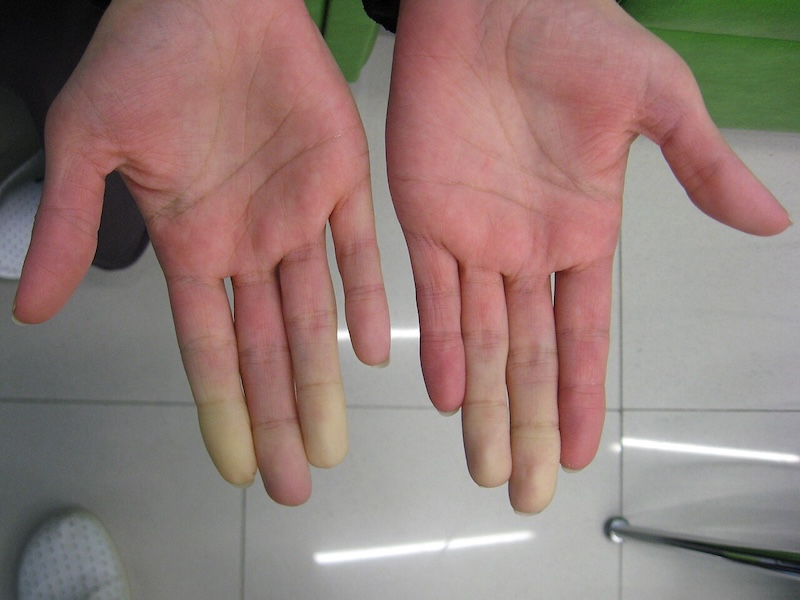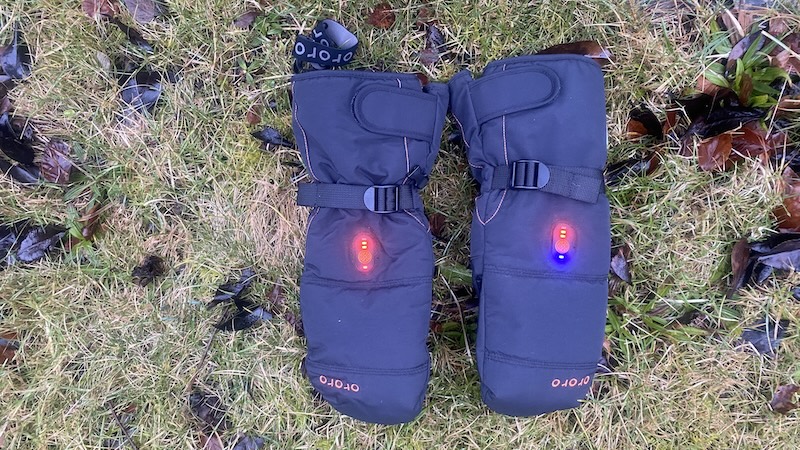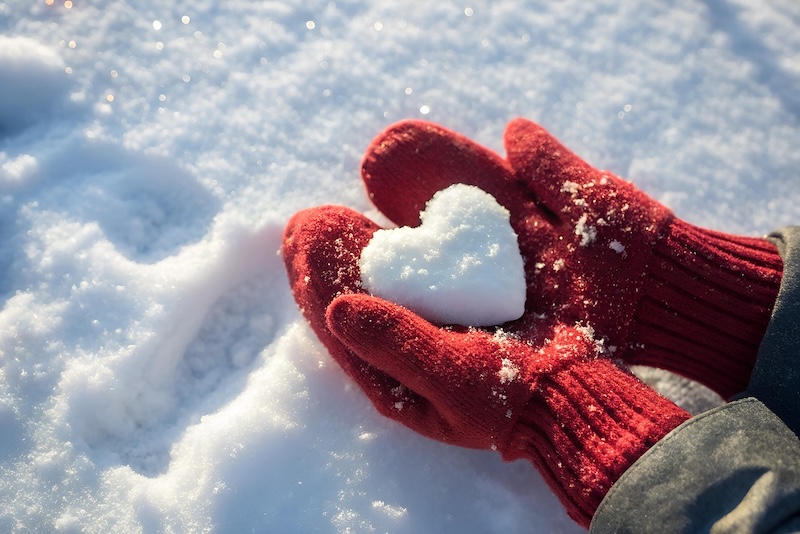Spending time in the outdoors, whether walking, running or cycling has many health benefits, but for people like me who suffer with Raynaud’s Syndrome, the cold can literally be a pain.

What is Raynaud’s Syndrome?
Raynaud’s Syndrome is named after the French physician Maurice Raynaud, who first described the condition in 1862.
It is a syndrome where blood flow to fingers and toes, as well as ears or nose, is restricted or interrupted. It happens when the blood vessels in the hands or feet constrict. These constrictions are called vasospasms.
There are two types of Raynaud’s: Primary and secondary. Vasospasms can be provoked by underlying health issues, such as arthritis or autoimmune disease, and these are called secondary Raynaud’s. If you smoke or take medications that narrow the arteries, you may have a greater chance of secondary Raynaud’s, too.
For people who experience Raynaud’s but are otherwise healthy, the condition is classed as “primary” Raynaud’s.
The most common trigger for Raynaud’s is cold temperatures and it is why people suffer greater Raynaud’s problems in winter, although it is still possible at other times of the year if you become too cold.
Studies show that women are more likely than men to have Raynaud’s phenomenon. In addition, people under the age of 30 have a greater chance of primary Raynaud’s while secondary Raynaud’s is most likely to develop in people aged 30 to 40. I have had Raynaud’s for as long as I can recall (certainly since my 20s and I am not in my late 50s. It has become worse, sadly.)

Raynaud’s Syndrome symptoms
The most common symptom of Raynaud’s is that your fingers, toes, ears or nose go numb and discolour to white, and sometimes even have a blue tinge.
People with primary Raynaud’s usually describe their digits as being numb and without pain. Those with secondary Raynaud’s also describe numbness accompanied by pain or tingling. The numbness and white colour can last a few minutes or many hours.
With primary Raynaud’s, it’s common for fingers or toes on one side of your body to affected at the one time. So you may see one to several fingers on one hand turning white and feeling numb. Secondary Raynaud’s can affect one or both sides of the body.
However, everyone experiences Raynaud’s in a different way and each episode can vary, too.
For people who are active, the Raynaud’s can often strike after exercise, when you are at rest again.
for me, Raynauld’s often happens as soon as I stop running or cycling. It feels as though my hands have gone into shutdown. The blood can’t get to my fingers and they turn white and numb. Trying to get the circulation back can take a lot of time and I need to be somewhere warm, such as a bath.
For most sufferers, being in a warm environment helps to reverse the vasospasms but the digits can go through a phase of different colours, from mottled white and pink, to bright red. Many experience pain as the blood returns to fingers and toes. This is sometimes called “hot aches” if it happens too quickly and painfully. I have suffered pain so bad with hot aches that I’ve cried.
There is a chance you will end up with chilblains, too. These appear as patches of red and itchy skin that can feel like they are burning. They fine happen when skin has been cold and then it becomes hot too quickly. These usually clear up on their own but they can last weeks and be uncomfortable.

How do I know if it’s Raynaud’s?
Most people realise they have Raynaud’s because of the obvious symptoms and by talking to other people. It’s possible to have the condition diagnosed through a discussion of symptoms with a medic and through various tests.

How to treat Raynaud’s
The key is to stay warm, especially when in a cold environment. Wearing gloves is an obvious solution to chilly hands, while warm socks and footwear that keep feet warm and dry will help, too. If you suffer with Raynaud’s in ears and nose, try wearing a hat and a buff pulled up over your mouth and nose.
It’s also a good idea to aim to keep the torso warm. If your body is warm, there is more chance of the extremities having adequate blood circulation.
If you suffer Raynaud’s, especially in the hands, after exercise there are several important steps you can take:
- Wear gloves and an extra baselayers during exercise so you do not allow you body or hands to become chilled.
- Do not allow bare skin on your hands to be exposed to the cold air or wind.
- As soon as you stop exercise, change out of damp, chilly clothes and immediately get dressed again with lots of warm layers. An insulated jacket will help to maintain your body temperature.
- Have a spare pair of gloves ready to wear after exercise.
- A flask of warm drink, such as tea or even just plain hot water, will assist you to stay warm.
- It might be tempting to place hands on a hot radiator, under a hot water tap or in a bowl of hot water but this can be dangerous because numb digits will not tell you when the skin is being burned. It can also lead to pain when the blood returns. Instead, make sure water is lukewarm not hot.
- Gently massage fingers and toes to try to get the blood to flow again.
- Have a warm shower or bath as soon as you return home.

Other tips to avoid Raynaud’s include:
- Stay warm at all times, indoors and outdoors.
- Avoid caffeine and nicotine, which can cause blood vessels to constrict.
- Exercise to boost circulation.
- Manage stress.
- If all else fails, there are medications that can help blood vessels to relax and widen
- Some people swear by alternative remedies, such as fish oil supplements, Ginkgo, ginger and acupuncture.

More tips for Raynaud’s and sport
Here are more tips for people who enjoy running, walking, cycling or simply spending time outdoors but who suffer with Raynaud’s.
- Warm your clothes by putting gloves, socks and base layers on the radiator or in the tumble dryer before heading outdoors.
- Warm your body before heading out. You could take a warm shower, then dress in warm clothes, or do a few warm up exercises in your home.
- Layer up with lots of thin layers, especially those that fit close to the skin. The layers create warm air traps. Add a windproof jacket. Wear running gloves and then running mitts over the top. (you can add links here Pat?)
- Try to keep going when out for a run or bike ride. It’s when you stop and your heart rate decreases and you feel the chill of damp, sweaty clothes that you are more likely to suffer Raynaud’s. If you need to stop because you are with other people, make sure you keep moving while at a standstill, such as by windmilling your arms.
- After exercise, allow your body to gently cool down by walking or light jogging and then follow all the above tips for getting into warm clothing and having a warm but not boiling hot shower. Handwarmers, including rechargeable warmers, can help to keep hands warm as you make the journey from exercise to home.

